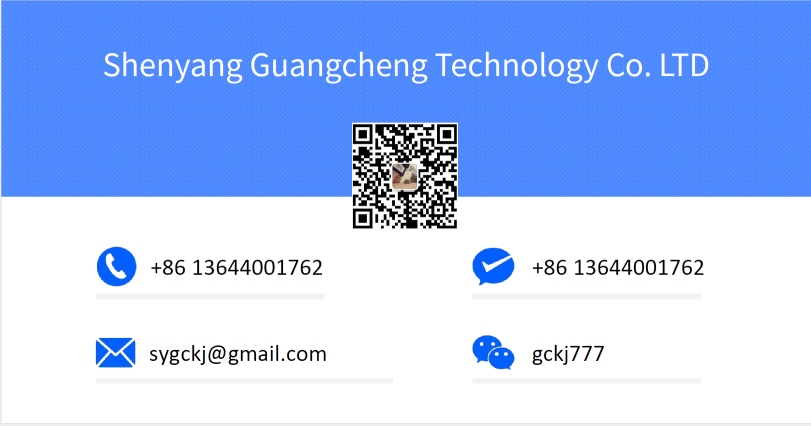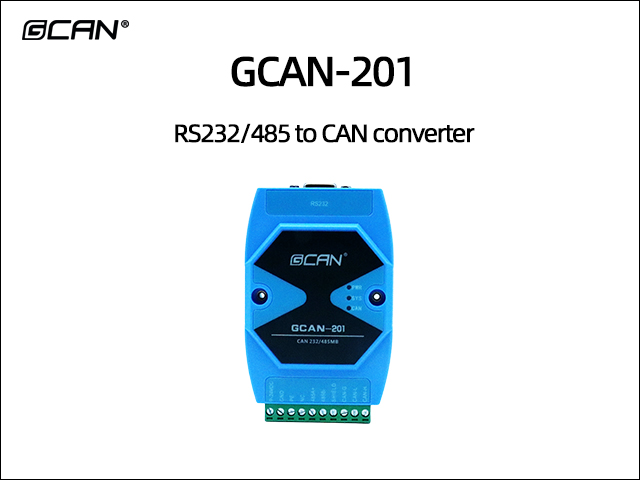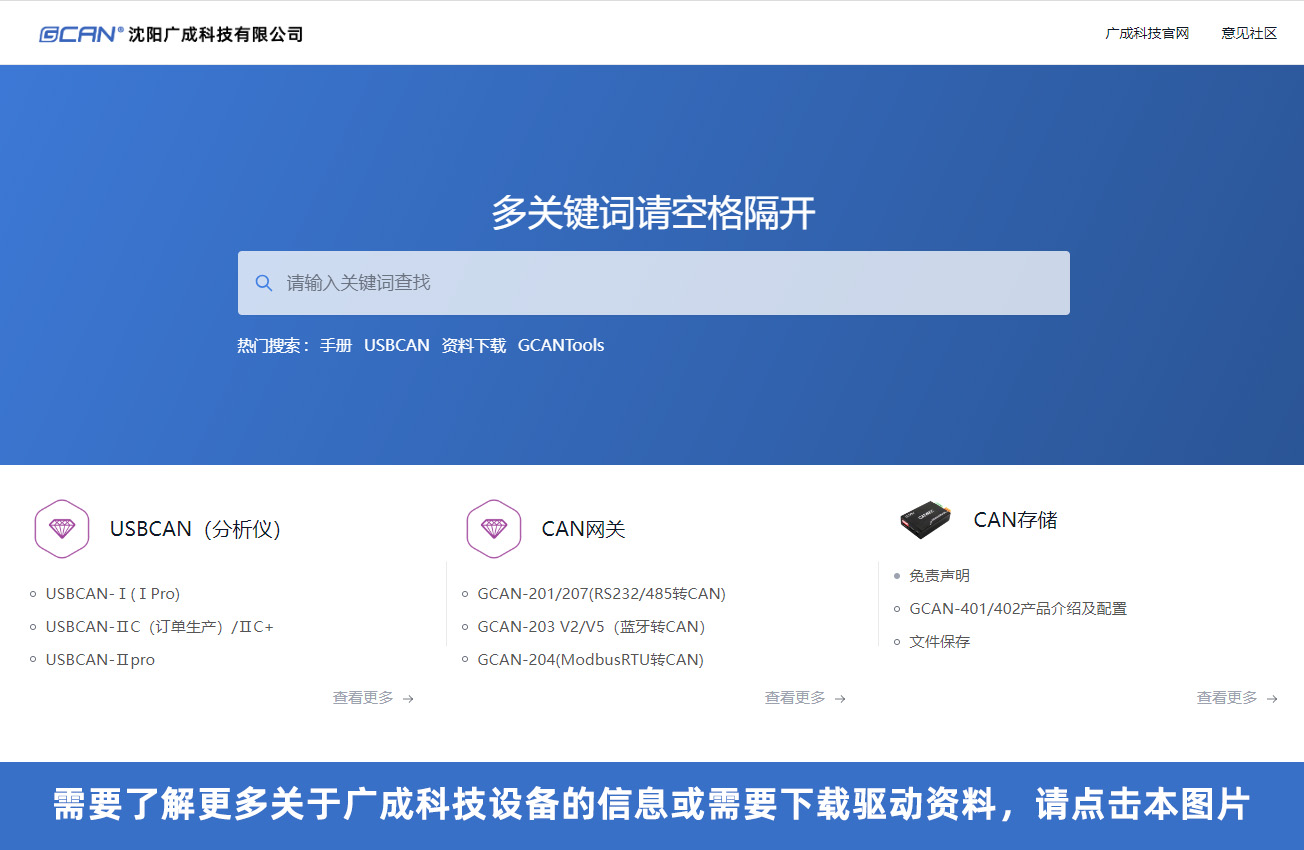GCAN-201 RS232/485 to CAN converter
- Brand:
- GCAN
- Model:
- GCAN-201
- Application:
- ● The existing RS-232 device is connected to the CAN bus network; ● Extend the standard RS-232 network communication length; ● PLC equipment is connected to the CAN bus network for communication; ● Gateway bridge between CAN bus and serial bus; ● Industrial field network data monitoring; ● Remote communication for coal mines and oil wells; ● CAN teaching application remote communication; ● CAN industrial automation control system; ● CAN bus application systems such as intelligent building control data broadcasting systems.
-
1. Equipment Introduction
The Shenyang Guangcheng Technology GCAN-201 module (CAN232/485MB) is an industrial-grade CAN bus and serial bus communication connector (bridge) that integrates one standard CAN bus interface and one standard serial interface (RS-232/RS-485). By using the GCAN-201 module, users can enable devices that originally use RS-232/RS-485 bus for communication to obtain a CAN bus communication interface without changing the original hardware structure. This enables the connection between RS-232/RS-485 communication devices and CAN bus networks, forming CAN bus network control nodes for data processing and data acquisition in CAN bus network fields such as fieldbus laboratories, industrial control, smart communities, and automotive electronic networks.
When operating normally, the GCAN-201 module is in a state of real-time monitoring of the CAN bus and RS-232/RS-485 bus. Once it detects data reception on one side of the bus, it immediately parses it, loads it into its respective buffer, and then processes and converts it according to the set working mode before sending it to the other side of the bus, achieving data format conversion. The GCAN-201 module is a key tool for industrial bus retrofits and interconnection of multiple bus devices. At the same time, this module features compact size and plug-and-play functionality, making it the best choice for portable system users. Various bus interfaces of the GCAN-201 module are integrated with isolation protection modules, protecting the module from damage caused by transient overvoltage and overcurrent. The DIN rail fixing method makes it easier to integrate into various control cabinets.
2. Equipment Parameters
● Standard serial port level, with the option to select RS232 or RS485 bus through configuration software;
● The RS232 interface adopts a standard 3-wire system, while the RS485 interface adopts a standard 2-wire system;
● The serial port baud rate supports 600bps~115200bps and can be configured through software;
● Provide two data conversion modes: transparent conversion and transparent conversion with identifiers;
● Three conversion directions are configurable: bidirectional conversion, CAN-to-serial port conversion only, and serial port-to-CAN conversion only;
● The CAN bus supports CAN2.0A and CAN2.0B frame formats, conforming to the ISO/DIS 11898 specification;
● The CAN bus communication baud rate is arbitrarily programmable between 5kbps and 1Mbps;
● The CAN bus interface employs electrical isolation, with an isolation module insulation voltage of DC 1500V;
● Powered by 9~30V DC (20mA, 24V DC);
● RS485 and CAN interfaces utilize terminal interfaces, while RS232 employs standard DB9 interfaces;
● Use the RS232 interface to enter the RS232CAN-Config software to configure the working mode and all parameters;
● Non-volatile memory stores configuration parameters and automatically loads the most recent parameters each time it is powered on;
● The available accessory card rail connectors can be installed onto the DIN card rail;
● Operating temperature range: -40℃~+85℃;
3. Application Fields
● The existing RS-232 device is connected to the CAN bus network;
● Extend the standard RS-232 network communication length;
● PLC equipment is connected to the CAN bus network for communication;
● Gateway bridge between CAN bus and serial bus;
● Industrial field network data monitoring;
● Remote communication for coal mines and oil wells;
● CAN teaching application remote communication;
● CAN industrial automation control system;
● CAN bus application systems such as intelligent building control data broadcasting systems.
Welcome to inquire and learn more.
- ● Standard serial port level, with the option to select RS232 or RS485 bus through configuration software;
● The RS232 interface adopts a standard 3-wire system, while the RS485 interface adopts a standard 2-wire system;
● The serial port baud rate supports 600bps~115200bps and can be configured through software;
● Provide two data conversion modes: transparent conversion and transparent conversion with identifiers;
● Three conversion directions are configurable: bidirectional conversion, CAN-to-serial port conversion only, and serial port-to-CAN conversion only;
● The CAN bus supports CAN2.0A and CAN2.0B frame formats, conforming to the ISO/DIS 11898 specification;
● The CAN bus communication baud rate is arbitrarily programmable between 5kbps and 1Mbps;
● The CAN bus interface employs electrical isolation, with an isolation module insulation voltage of DC 1500V;
● Powered by 9~30V DC (20mA, 24V DC);
● RS485 and CAN interfaces utilize terminal interfaces, while RS232 employs standard DB9 interfaces;
● Use the RS232 interface to enter the RS232CAN-Config software to configure the working mode and all parameters;
● Non-volatile memory stores configuration parameters and automatically loads the most recent parameters each time it is powered on;
● The available accessory card rail connectors can be installed onto the DIN card rail;
● Operating temperature range: -40℃~+85℃;
- Packing
Standard package:Carton
Delivery Time
2~5 days after receipt of your payment by air express
After-sale service
GCAN provide one year free after-sales warranty,lifetime free software and technical support. 





